Texas Blind Salamander
- March 12, 2024
- 0 comment
The Texas Blind Salamander (Eurycea rathbuni) is an intriguing species that captivates the attention of biologists and conservationists alike. Native to the Edwards Aquifer region of Central Texas, particularly in the vicinity of San Marcos, Hays County, this aquatic creature resides in the dark, submerged caves far beneath the surface of the Earth. The salamander’s unique adaptations and enigmatic lifestyle make it a subject of fascination and concern, as its existence is closely tied to the health of its underground freshwater habitat.

| Feature | Description |
|---|---|
| Scientific Name | Eurycea rathbuni |
| Common Name | Texas Blind Salamander |
| Habitat | Subterranean waters of the Edwards Aquifer in Central Texas |
| Size | Approximately 5 inches in length |
| Diet | Small aquatic invertebrates such as amphipods, snails, and shrimp |
| Lifespan | Unknown due to the difficulty of studying these creatures in their natural habitat |
| Conservation Status | Endangered, due to habitat degradation, pollution, and over-extraction of aquifer waters |
| Reproduction | Lays eggs underwater in secluded areas; specific details on reproduction cycle are largely unknown |
| Unique Features | Lacks eyes and has a translucent, pale pink skin; relies on sensitivity to water currents and vibrations for navigation and hunting |
| Threats | Pollution, over-extraction of water from the Edwards Aquifer, habitat destruction |
| Importance of Conservation | Protects the Edwards Aquifer’s biodiversity and water quality; ensures the survival of this unique species |
Appearance
Skin Texture
The skin of the Texas Blind Salamander is smooth, with a slightly gelatinous coating that helps it move through water. This texture is also beneficial in absorbing oxygen directly from the water.


Length
The Texas Blind Salamander typically measures around 5 inches (13 cm) in length. This size allows it to navigate the narrow passages of its underwater cave habitat efficiently.
Body Color
Its body is translucent and pale pink, a trait that makes its internal organs visible through the skin. This unique coloration is a result of its adaptation to life in total darkness.


Eyes
This species has evolved without eyes, a common adaptation among animals living in dark environments. The absence of eyes indicates its reliance on other senses to navigate and find food.
Limbs
The salamander is equipped with four well-developed limbs, ending in delicate digits. These limbs and digits are crucial for swimming and maneuvering through the aquatic environment of its cave habitat.


Head Shape
Its head is elongated with a pointed snout, which is highly adapted for sensing vibrations and water currents. This adaptation helps the salamander detect prey and predators in the absence of light.
Tail
The tail is long and tapered, aiding significantly in its swimming efficiency. This feature allows the salamander to make quick turns and swift movements to catch prey or evade threats.

Habitat and Distribution
The Texas Blind Salamander (Eurycea rathbuni) resides in a highly specialized habitat within the Edwards Aquifer, specifically in the underwater limestone caves near San Marcos, Hays County, Texas. This unique ecosystem provides the clear, cool, and mineral-rich waters necessary for the salamander’s survival, supporting a diverse community of aquatic invertebrates upon which it preys.

The aquifer itself is a vast underground reservoir that spans several counties in Central Texas, but the salamander’s distribution is restricted to this specific locale where conditions are optimal for its existence. Adapted to life in complete darkness, the Texas Blind Salamander’s presence is an indicator of the health of the Edwards Aquifer system, highlighting the importance of preserving these subterranean waters not only for the species’ survival but also for the biodiversity it supports and the human communities that rely on the aquifer for water.
Diet and Behavior
The diet of the Texas Blind Salamander mainly consists of small aquatic invertebrates, including amphipods, snails, and shrimp, which thrive in the same underwater caves. It is an opportunistic feeder, relying on the abundance of prey within its environment. The salamander’s hunting strategy is primarily based on ambush, waiting patiently for an unsuspecting victim to come within reach before striking with its quick and precise movements.
Behaviors
Cave Dwelling
The Texas Blind Salamander spends its entire life in the dark, submerged caves of the Edwards Aquifer. This behavior is adapted to the constant, cool temperatures and high humidity of its underground habitat.
Ambush Predation
It primarily engages in ambush predation, remaining motionless and waiting for prey to come within striking distance before quickly capturing them. This strategy is effective in the dark environment where visual hunting is not possible.
Sensory Navigation
In the absence of vision, the salamander relies heavily on other senses such as detecting vibrations and changes in water pressure to navigate and locate prey within its pitch-black environment.
Social Interaction
Little is known about the social behaviors of the Texas Blind Salamander due to the difficulty of observing them in their natural habitat. However, like many salamanders, they are presumed to have interactions during breeding seasons or when competing for food resources.
Breathing Through Gills
It breathes underwater through external gills, a behavior that allows it to remain submerged indefinitely. The feather-like gills are efficient at extracting oxygen from the water.
Nocturnal Activity
Although it is hard to distinguish day from night in their dark cave environment, research on similar species suggests they may be more active during what would be nighttime hours on the surface, aligning their activity with the patterns of their prey.
Larval Care
While specific details are lacking, some related species exhibit care for their eggs or larvae. The Texas Blind Salamander might display similar behaviors, ensuring the survival of their offspring in the aquatic cave environment.
Adaptive Feeding
The salamander adapts its diet based on the availability of prey within its habitat, demonstrating flexibility in feeding behavior to survive in the nutrient-limited environment of an underground cave.
Reproductive Habits
Little is known about the reproductive habits of the Texas Blind Salamander due to the inaccessibility of its natural habitat. However, it is believed that reproduction occurs underwater, where eggs are laid in secluded areas away from potential threats. The larvae are fully aquatic and resemble miniature adults, though with external gills, which they retain throughout their lives, indicative of their neotenic nature.
Morphological Adaptations
The Texas Blind Salamander exhibits several remarkable adaptations that facilitate its survival in a completely dark environment. Measuring about 5 inches in length, it possesses a translucent, pale pink skin, through which its internal organs can be seen. The absence of eyes is one of its most notable features, a common trait among cave-dwelling animals. Instead of visual perception, it relies on other highly developed senses, such as sensitivity to water currents and vibrations, to navigate and hunt in its pitch-black habitat. This sensory adaptation is crucial for detecting prey and avoiding predators.
The Importance of Conservation Efforts
The survival of the Texas Blind Salamander is inextricably linked to the conservation of the Edwards Aquifer and its surrounding environment. Efforts to protect this vital water source include controlling pollution, managing groundwater extraction sustainably, and preserving the integrity of the aquifer’s recharge zones. Additionally, research and monitoring programs are essential for understanding the needs of this species and the dynamics of its habitat, which can inform effective conservation strategies.
Conservation Status
The Texas Blind Salamander is classified as an endangered species, primarily due to the fragility of its ecosystem. The Edwards Aquifer, which supplies water to millions of people and countless agricultural endeavors, faces significant threats from pollution, over-extraction, and habitat destruction. These activities not only compromise the quality of water within the aquifer but also threaten the very existence of this unique salamander and the intricate ecosystem it represents.
Different Species

San Marcos Salamander (Eurycea nana)
This species is also endemic to Texas, specifically the San Marcos River area. It is adapted to living in aquatic environments but, unlike the Texas Blind Salamander, it has eyes and does not live in complete darkness.
Jollyville Plateau Salamander (Eurycea tonkawae)
Found in the Jollyville Plateau region of Texas, this salamander inhabits springs and caves, showing some adaptation to subterranean life.


Barton Springs Salamander (Eurycea sosorum)
Endemic to the Barton Springs pool in Austin, Texas, this species is highly adapted to life in clear, spring-fed waters and faces threats from urban development and pollution.
Austin Blind Salamander (Eurycea waterlooensis)
Similar to the Texas Blind Salamander, this species is adapted to live in the dark, underwater environments of the Edwards Aquifer system in Texas. It is blind, with reduced pigmentation, reflecting its adaptation to a life in darkness.

Conclusion
The Texas Blind Salamander serves as a poignant reminder of the hidden biodiversity that exists within our planet’s subterranean waters. It highlights the importance of conserving not only the species we see but also those that dwell in the shadows, out of sight. Protecting such unique creatures and their habitats is crucial for maintaining the ecological balance and ensuring the health of our planet’s freshwater resources. Through continued research and conservation efforts, we can hope to secure a future for the Texas Blind Salamander and the mysterious underground world it calls home.
Frequently Asked Questions (FAQs)
- What is the Texas Blind Salamander?
The Texas Blind Salamander is a unique species of aquatic salamander that lives in the underwater caves of the Edwards Aquifer near San Marcos, Texas. It is adapted to a life in complete darkness. - Why is the Texas Blind Salamander blind?
It has evolved to be blind due to its habitat in dark, subterranean water-filled caves where eyesight is unnecessary. Instead, it relies on other senses to navigate and find food. - What does the Texas Blind Salamander eat?
It primarily feeds on small aquatic invertebrates such as snails, shrimp, and amphipods that inhabit the same underwater caves. - How does the Texas Blind Salamander breathe?
This salamander breathes through external gills, which are red, feather-like structures on the sides of its head, allowing it to extract oxygen directly from the water. - How big does the Texas Blind Salamander get?
The average length of a Texas Blind Salamander is about 5 inches (13 cm), though sizes can vary slightly among individuals. - Is the Texas Blind Salamander endangered?
Yes, the Texas Blind Salamander is considered endangered due to its limited habitat range, threats from groundwater pollution, and habitat destruction. - What are the main threats to the Texas Blind Salamander?
The main threats include pollution, over-extraction of aquifer water, habitat destruction, and the introduction of non-native species that compete for resources. - How do Texas Blind Salamanders reproduce?
While specific details are scarce due to their inaccessible habitat, it is believed that they lay eggs in the water, where the larvae hatch and are fully aquatic, similar to the adults. - Can Texas Blind Salamanders live outside their natural habitat?
Due to their specialized adaptations, Texas Blind Salamanders are unlikely to survive outside their natural habitat in the Edwards Aquifer’s underwater caves. - What conservation efforts are in place for the Texas Blind Salamander?
Conservation efforts include monitoring the population, protecting the Edwards Aquifer, regulating water extraction, reducing pollution, and habitat restoration to ensure the survival of this unique species.


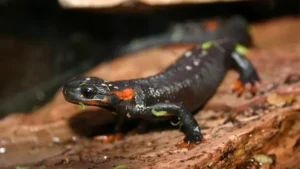
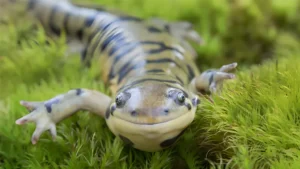
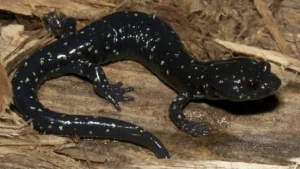


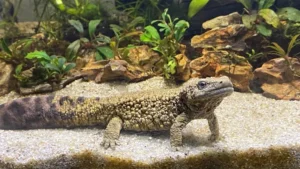
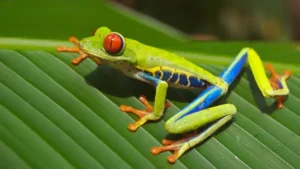
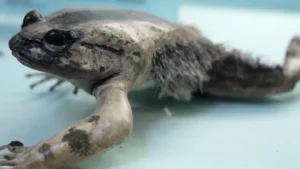
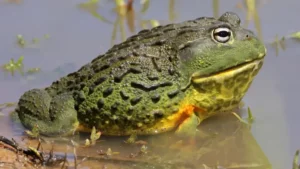


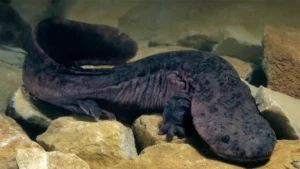
Leave your comment